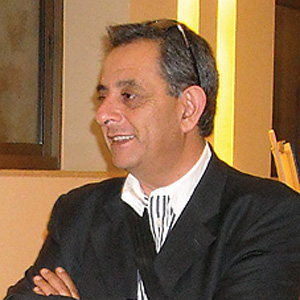It must have been a day or two before the end of November 1998, when I parked my small van in front of Abu Ali’s bindery north of Jerusalem to pick up the first issue of This Week in Palestine. It was the December 1998 edition; issue number one! Little did I know that twenty years later, I would still be picking up the Jerusalem copies of This Week in Palestine from the printer, a hundred meters away from Abu Ali’s bindery.
The original idea came from a friend, Dr. Ghassan Khatib, who thought that since the third millennium was approaching, and many, many tourists were supposed to come to the Holy Land, it would be good to have a publication in English that would tell our visitors where to go, what to do, and when and where the prayer services would be held; and it could possibly include something about Palestine, the budding nation. Dr. Khatib believed that as a design and print-management firm, we were in position to partner with him on such a project. We were indeed in such a position, and we accepted the challenge. This is how This Week in Palestine, TWiP, began literally twenty years ago. (I will tell the story about how it ended when it stops coming out!) A couple years later, we parted amicably with Dr. Khatib and continued solo.
With a significant measure of humility, we have to admit that This Week in Palestine is a Palestinian success story. Not only has it survived innumerable challenges – including weeks-long military incursions (during which we were forbidden to enter our offices), cyber-attacks, economic depressions, and a 4:00 a.m. raid in June 2014 by twelve Israeli soldiers who confiscated all our computers and servers – but it has gotten stronger with every issue published; and we have managed to complete twenty years without missing a single issue. Naturally, the credit for this success goes to a team who believes in this project that aims to promote and document Palestine. A team that includes an editor who sends a message at 2:45 a.m. to discuss a certain article; an art director, Taisir Masrieh Hazboun, who has not only been the creative master behind TWiP’s design for twenty years but has also been around to discuss all the minor and major ideas and strategic plans. A team that has often worked for months without getting paid. In brief, a family of people who, despite all odds, have stuck together and continue to give their very best.
Sentiment and emotion aside, This Week in Palestine is also a national brand under which many products, such as annual diaries and posters, have been marketed. This brand reflects both pride and hope. Pride in being Palestinian with enough cultural solidity to be able to repel any attack on Palestinian identity, and hope for a fully independent Palestine that is democratic, liberal, and secular. This is, in fact, what This Week in Palestine stands for and aims to achieve. Throughout our twenty-year history, we have received countless comments from our readers. However, the two main messages that emerge time and again are: “You connect us with Palestine” (sent predominantly by Palestinians living in the diaspora) and “You make us proud to be Palestinian.”
Regarding future plans, and with a twenty-year compilation of thematic, “non-news” content that covers just about any topic you can think of that concerns Palestine, our dream project is to build a portal that would contain thousands of professionally written and subject-categorized articles about Palestine and Palestinians. A good number of the articles would also be available in Spanish.
Finally, we wish you all a Merry Christmas and a Happy New Year. Long live Palestine!


